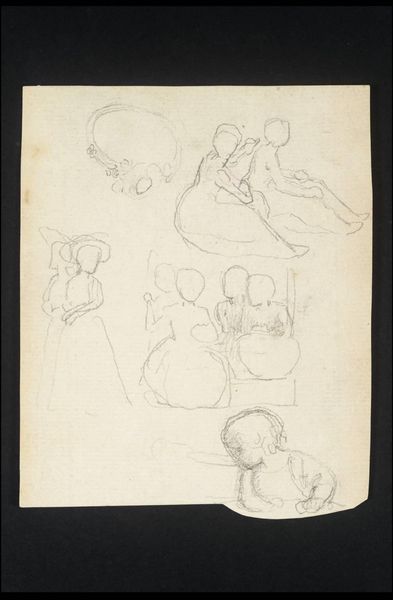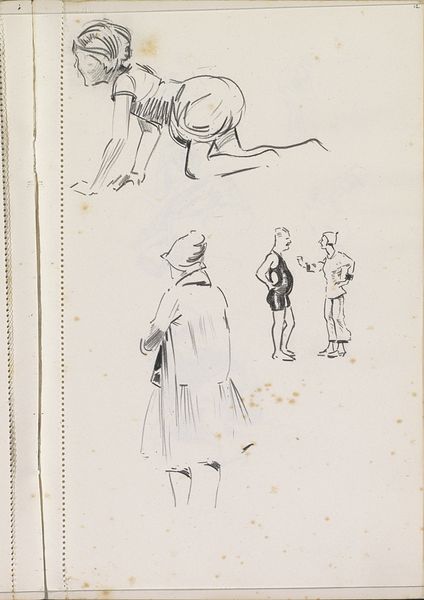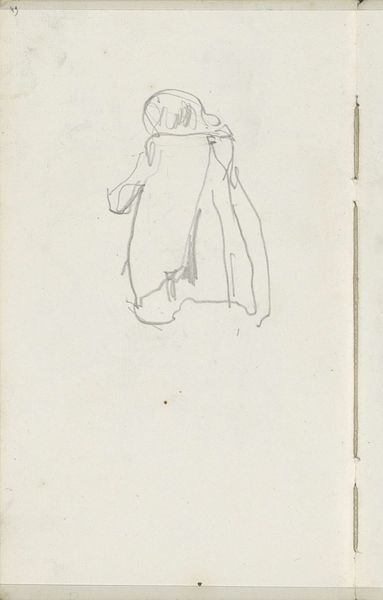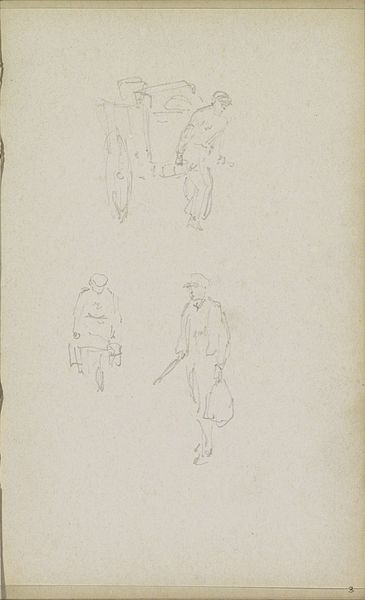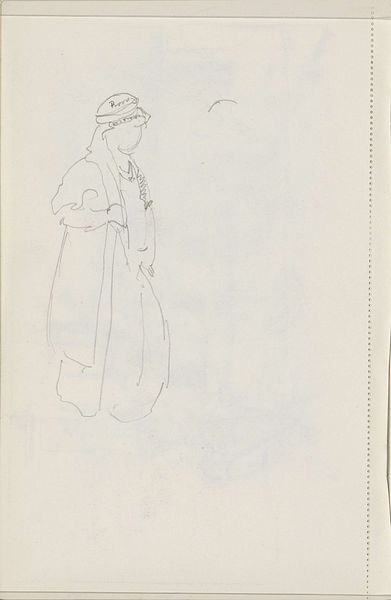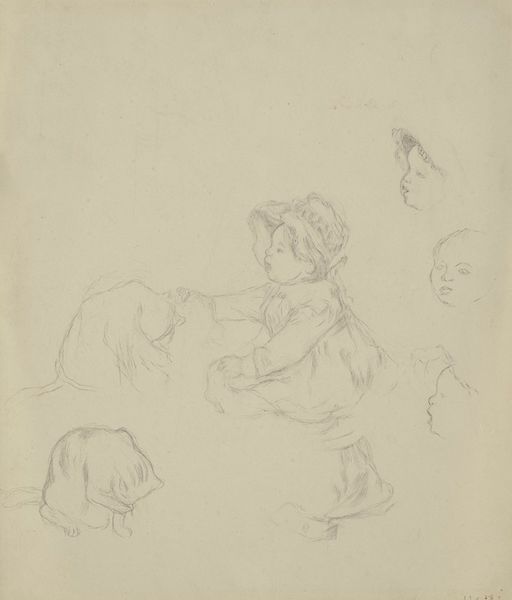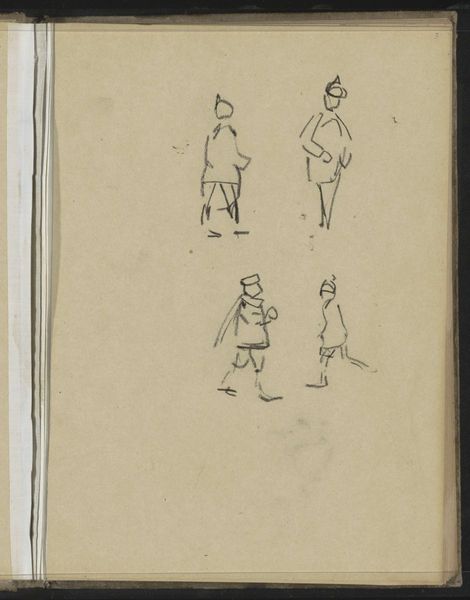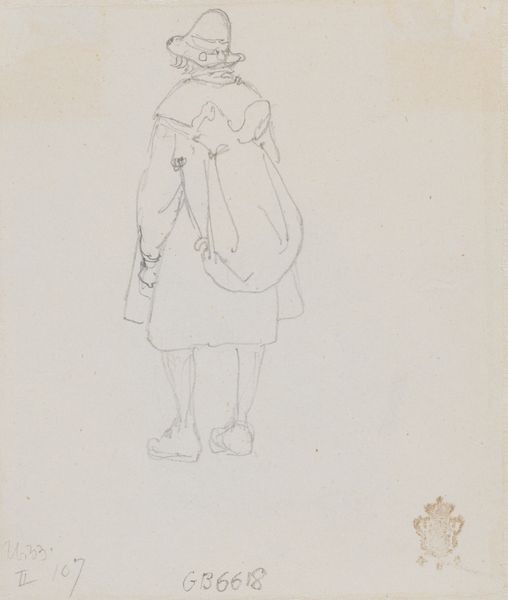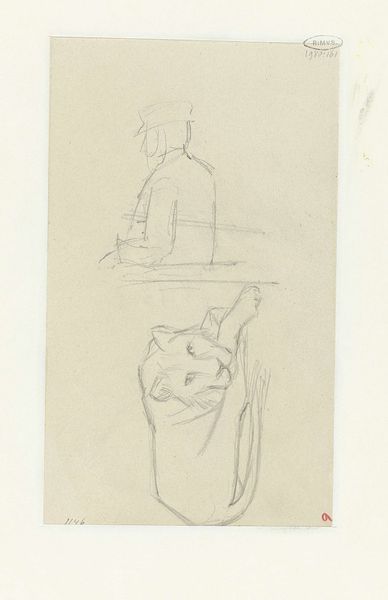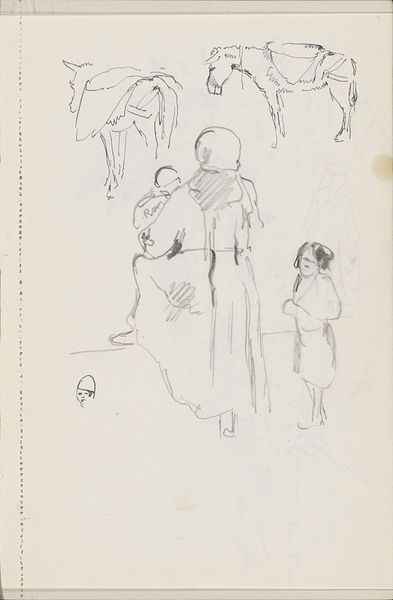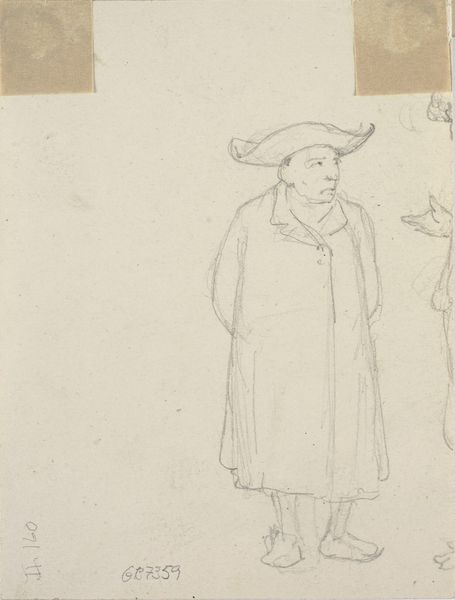
drawing, pencil
#
portrait
#
drawing
#
figuration
#
pencil
#
genre-painting
Dimensions: 168 mm (height) x 109 mm (width) (bladmaal)
Editor: This is "Figurstudier," or "Figure Studies," a pencil drawing by Wilhelm Marstrand from 1851. There's a gentleness to the lines, and the composition, although sparse, feels balanced. What catches your eye, considering Marstrand's formal choices here? Curator: Immediately, the relationship between line and form commands attention. The delicate hatching suggests volume without resorting to chiaroscuro. Consider the economy of line: a few strokes define the contours of the figures and delineate folds in the fabric. It almost exists as pure form; this work can be viewed through the semiotic lens and stripped bare. Editor: So you're focusing on how the lines create shapes, without worrying about their identity as 'people'? Curator: Precisely. Disregarding the contextual background or societal commentary – if any exists – the core strength lies in the self-referential quality of the art elements themselves. The rhythmic placement of figures on the plane and the harmony of lines contribute to the picture's compositional integrity. Do you perceive such rhythms and compositional relations as well? Editor: I do now that you point them out! I hadn't initially thought of it as more than a sketch, but now the choices in positioning and shading feel deliberate. Curator: Indeed. It is imperative that we delve beneath the surface and confront the artwork in its purest state. The careful composition gives the whole arrangement cohesion. These subtle cues build the visual experience, demanding closer analysis. Editor: I appreciate your emphasizing the artistic tools. Focusing on lines and shapes opens a new understanding. Thank you. Curator: Art resides in a multitude of aspects, thus we ought to strive towards viewing with clarity in order to enrich comprehension.
Comments
No comments
Be the first to comment and join the conversation on the ultimate creative platform.
